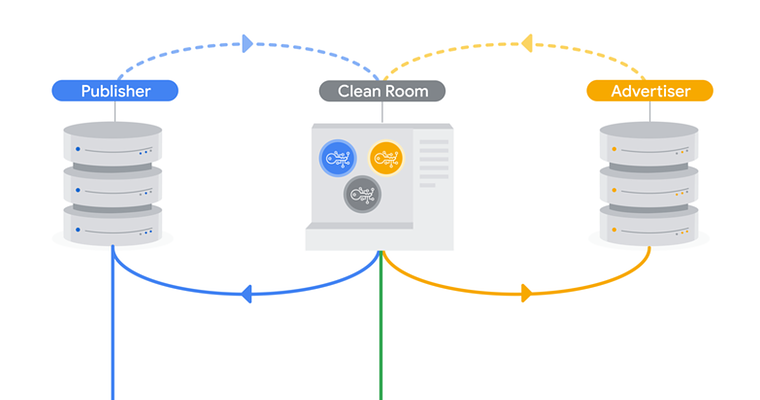

Google Display Ads Get More Personal With New Targeting Technology
source link: https://www.searchenginejournal.com/google-display-ads-get-more-personal-with-new-targeting-technology/467775/
Go to the source link to view the article. You can view the picture content, updated content and better typesetting reading experience. If the link is broken, please click the button below to view the snapshot at that time.

Google AdSense First-Party Cookies Now Support Personalization
An update to Google’s first-party cookies will allow websites to serve personalized AdSense ads.
Matt G. Southern
- October 13, 2022
- 2 min read
-
SHARES
-
READS

Google is updating first-party cookie support with ad personalization capabilities. This change will affect ads served through AdSense.
Google AdSense started allowing first-party cookies in 2020, which use information associated with the domain a user is visiting to serve ads.
Initially, support included frequency capping on ads, which limits the number of times a user sees the same ad on a website.
Now, Google is adding support for ad personalization, arguably the number one reason to use first-party cookies over third-party cookies.
However, you’ll have the option to choose one or the other, as Google AdSense is adding a toggle to turn first-party cookies on and off.
Top Freelancers for Every Business
Fiverr gives your team the flexibility to expand in-house capabilities and execute every project by connecting with freelancers for every skill set you need.
To access the control, log into your AdSense account and click Brand safety > Content > Blocking controls > Manage Ad serving.
Why Enable First-Party Cookies In Google AdSense?
First-party cookies contain information about a user’s activity on the site they’re currently visiting.
First-party cookies allow frequency capping on ads because they contain information about which ads a user sees on the website.
Frequency capping can potentially lead to higher revenue for AdSense users.
Limiting ad frequency prevents Google from serving ads a user has ignored multiple times before.
Frequency capping also prevents Google from serving ads a user has already clicked on.
In addition to frequency capping, Google will now use information in first-party cookies to personalize AdSense ads.
This change can further increase revenue for AdSense users, as website visitors will see a more relevant selection of ads.
If you’re unsatisfied with the impact of first-party cookies on your AdSense earnings, you can turn them off at any time.
Note that when third-party cookies are unavailable, Google may default to using first-party cookies.
Availability
The control to turn first-party cookies on and off is available now, though Google says your choice won’t affect ad serving until November 10, 2022.
Source: Google
Featured Image: Tada Images/Shutterstock
Matt G. Southern
Senior News Writer at Search Engine Journal
Matt G. Southern, Senior News Writer, has been with Search Engine Journal since 2013. With a bachelor’s degree in communications, ...
Subscribe to SEJ
Get our daily newsletter from SEJ's Founder Loren Baker about the latest news in the industry!
Google Display Ads Get More Personal With New Targeting Technology
Google creates a way for advertisers to deliver more personalized ads using first-party data.
Matt G. Southern
- October 12, 2022
- 3 min read
-
SHARES
-
READS

Google is rolling out a way to utilize first-party data to deliver more personalized ads via Display & Video 360 without third-party cookies.
A new solution called Publisher Advertiser Identity Reconciliation, or PAIR, reconciles first-party data for audiences who have visited both an advertiser’s and a publisher’s site.
Previously, it wasn’t easy to use both data sets in a privacy-safe way, as it would involve publishers sharing user information directly with advertisers.
Now, advertisers and publishers will be able to activate encrypted first-party information that is unique to their sites via aggregation.
This process ensures no user-level data is ever shared between parties. Google says the information is only readable and meaningful in the limited context of their direct relationship.
In a blog post, Google states:
“PAIR gives advertisers the ability to more closely connect with their known audiences, while avoiding tracking individuals across the web. As a result, advertisers can show relevant ads to some of their highest-intent audiences, helping to increase advertising performance and hit marketing objectives, while respecting people’s privacy expectations.”
What Does PAIR Mean For Businesses?
For businesses, this update to Google Display & Video 360 means they can use data collected first-hand to target ads to relevant audiences across the web.
With PAIR, businesses can more effectively target ads to people who’ve shared information with them, such as past purchasers and people on an email list.
PAIR can also be used to serve ads to cart abandoners and prevent people from seeing ads for a product they’ve purchased already.
By introducing a secure and privacy-preserving way to combine first-party data from advertisers and publishers, Google aims to address concerns about using pooled data.
“Seventy-six percent of advertisers and agencies find the usage of IDs based on pooled data concerning from a regulatory standpoint.
That’s why PAIR is different: it doesn’t require pooling of audience data. Instead, each advertiser and publisher will maintain ownership and control of its data.”
PAIR helps ensure users are only shown ads from the advertisers and publishers with whom they have direct relationships.
Google says this practice can instill trust in your brand. You won’t be serving ads to people who haven’t interacted with you, which is seen as a less intrusive way to advertise.
How Do Advertisers & Publishers Connect Their Data?
Advertisers and publishers can use clean rooms to connect their data. Clean rooms ensure any data shared by advertisers and publishers stays secure, and only encrypted data gets shared with Google for reconciliation.
Google is partnering with three clean-room providers, Habu, InfoSum, and LiveRamp.
In addition to facilitating data connection, clean rooms help manage the upload and encryption process, which means advertisers and publishers don’t have to manage it on their own.
Brands and publishers with first-party data are advised to contact their Display & Video 360 representatives for more information about using PAIR.
Source: Google
Featured Image: Screenshot from blog.google/products/marketingplatform/360/engage-your-first-party-audience-in-display-video-360/, October 2022.
Recommend
About Joyk
Aggregate valuable and interesting links.
Joyk means Joy of geeK

![The Third-Party Cookie Ban: Unlocking The Secrets Of First-Party Data [Podcast]](https://cdn.searchenginejournal.com/wp-content/uploads/2022/01/sejshow-featured-image-ep258-sponsored-61e17813576c2-sej-276x244.jpg)

